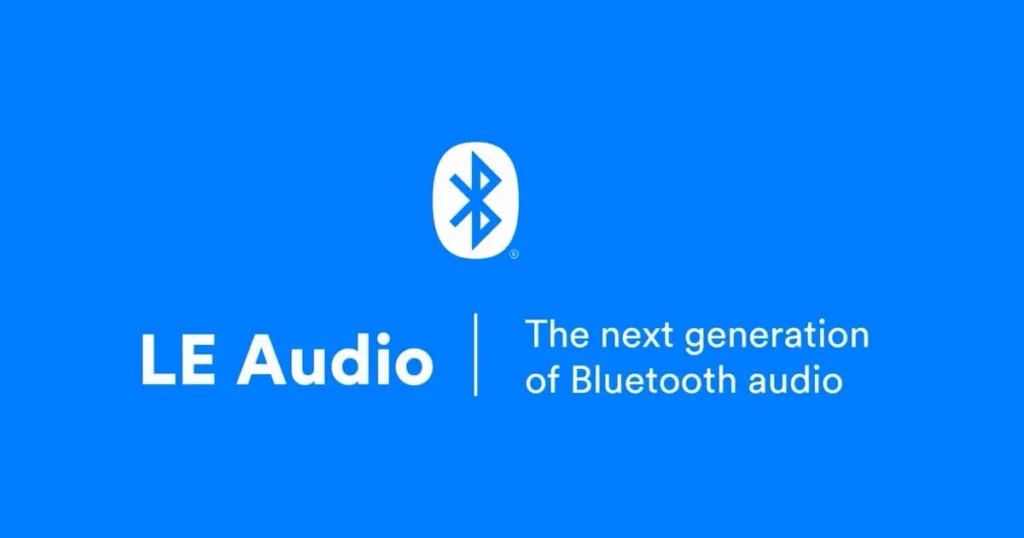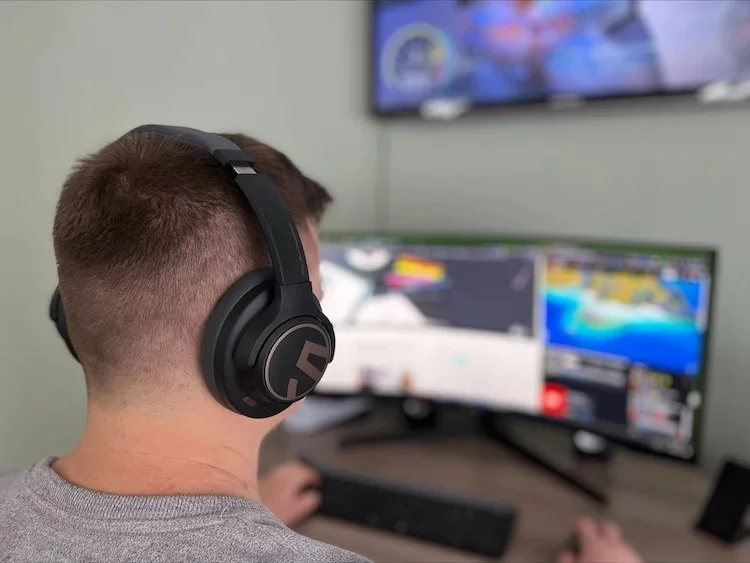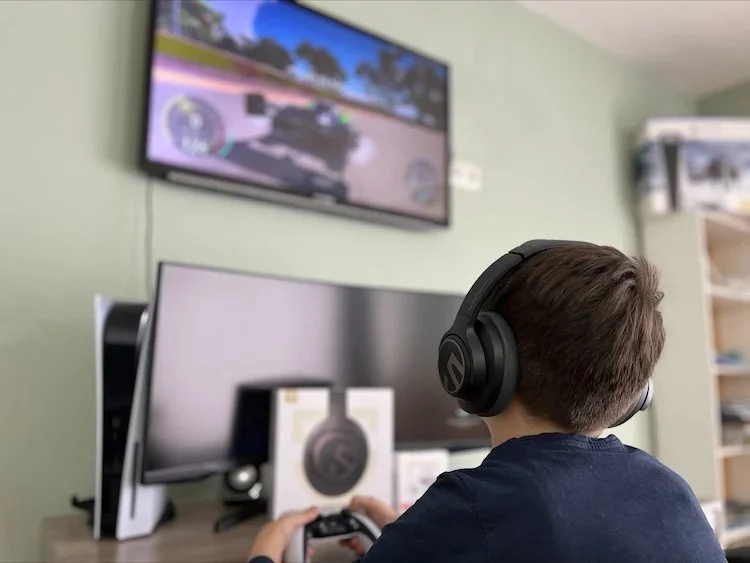Bluetooth has been the backbone of wireless audio for over 20 years. It started in the first hands-free car kits, early mono headsets, and quickly spread to phones, laptops, and speakers. Over time it became the default way to connect wirelessly, so much so that most people don’t even think about it anymore. But with the arrival of LE Audio, many users wonder if Bluetooth Classic is finally outdated, or if it still has a role to play for all the devices we already own.
Introduction
This question is more relevant now because Bluetooth 5.2 and newer are showing up in the latest headphones, earbuds, and smartphones. Features such as the new LC3 codec and Auracast broadcasts are no longer just technical notes on a spec sheet – they are real options in products you can buy today. That makes the debate of LE Audio vs Bluetooth Classic less about the distant future and more about the choices people face right now.
What is Bluetooth Classic?
Bluetooth Classic, also known as BR/EDR, is the older version that has carried wireless streaming for more than two decades. It was designed at a time when the main goal was simply to get audio working without cables, and it succeeded.

Classic works with codecs such as SBC, aptX, aptX HD, and LDAC. The SBC codec is mandatory, so any two devices can fall back to it, while higher-quality codecs like aptX or LDAC are optional extras when both devices support them. This gave Bluetooth Classic a balance between universal compatibility and the option of better sound.
You’ll find Classic in wireless headphones, car audio systems, game controllers, Bluetooth speakers, and even old feature phones. Its strength has always been stability and compatibility. You can take a headset from ten years ago and still pair it with a brand-new laptop, and it will work. That kind of reliability has kept Classic alive far longer than many expected.
But Classic has its weak spots. It uses more power than LE Audio, so headphones often need bigger batteries to last through the day. It also struggles with modern expectations like connecting to multiple devices at once. Switching between a laptop and a phone, for example, can feel clunky. These limits are exactly why LE Audio was created – not to replace Classic overnight, but to fix its long-standing issues.
What is LE Audio?
LE Audio was introduced with Bluetooth 5.2 and represents the biggest shift in Bluetooth audio since the technology began. Unlike Classic, which relied on older codecs, LE Audio is built around LC3 — the Low Complexity Communication Codec. LC3 was designed from the ground up to deliver the same or even better audio quality at much lower bitrates. That means it can stream music or calls using less bandwidth and less battery power, which makes a huge difference for earbuds and other small devices.

The advantages show up right away. With LC3, a pair of wireless earbuds can last longer without needing bigger batteries. Call quality improves too, because LC3 keeps voices clearer even when the connection isn’t perfect. Music at low bitrates also sounds cleaner compared to SBC, which often loses detail.
But LE Audio is not only about the codec. It also adds features that Classic never had. Multi-stream audio lets each earbud receive its own signal, instead of having one earbud relay audio to the other. That makes true wireless earbuds more stable, with fewer dropouts and better sync. Broadcast audio, branded as Auracast, is another major addition. With it, one device can send sound to many listeners at once — whether that’s a TV in a sports bar or an announcement system in an airport.
LE Audio also changes accessibility. For the first time, hearing aids can connect directly using standard Bluetooth, without extra adapters. This means people with hearing loss can use everyday devices like phones, laptops, and TVs without special hardware. It’s a small change in the spec, but a huge improvement in real life.
In short, LE Audio improves sound efficiency, lowers power use, and adds new features that open up entirely new ways to use wireless audio.
Key Differences Between LE Audio and Bluetooth Classic
When people compare LE Audio vs Bluetooth Classic, the differences can look very technical on paper. But once you break them down, they’re easy to understand and they explain why LE Audio is such a big deal.
- Audio codec – Bluetooth Classic relies on SBC as the baseline, and if both devices support it you can use aptX, aptX HD, or even LDAC. These codecs have given Classic flexibility but also fragmentation, since not every phone or headphone supports the same ones. LE Audio replaces this whole mix with LC3. The idea is simple: one codec that’s more efficient, works at lower bitrates, and still sounds better than SBC. For users, that means less guessing about which codec is active and more consistent results.
- Battery efficiency – Classic uses more power because it wasn’t designed with today’s ultra-compact earbuds in mind. LE Audio fixes this by lowering the bitrate without losing quality, which in turn cuts down the energy needed. In practice, a set of wireless earbuds using LE Audio can squeeze out extra hours of playtime compared to the same hardware running Classic.
- Multi-stream audio – One of the biggest frustrations with Classic true wireless earbuds is that one earbud often acts as the “master” and relays the signal to the other. This can cause small delays or connection dropouts. LE Audio streams directly to both left and right earbuds at the same time. That means fewer sync issues, smoother switching between devices, and even the possibility of one phone sending separate streams to two different pairs of earbuds at once.
- Auracast broadcast – With Classic, audio connections are private and limited. You pair one device to one or two receivers, and that’s it. LE Audio changes this completely with Auracast. A single device can send a broadcast that anyone nearby with compatible headphones can join, just like joining a Wi-Fi network. This has huge potential for places like gyms, airports, schools, and stadiums.
- Compatibility – Bluetooth Classic is still everywhere. It works in cars, old laptops, cheap speakers, and almost anything with a Bluetooth logo. LE Audio requires Bluetooth 5.2 or newer, which means you need recent hardware. Over the next few years, more devices will ship with LE Audio, but for now many people will use both standards side by side.
This is a good place for a simple comparison table, showing Classic on one side and LE Audio on the other, with rows for codec, efficiency, latency, multi-stream support, Auracast, and compatibility.
Real-World Performance
On paper, LE Audio looks like a big upgrade, but what matters is how it works in daily use. The difference shows up first in small devices such as wireless earbuds. With the LC3 codec, sound stays clear even at lower bitrates. For most people, that means you can use less battery and still get better quality than SBC. Earbuds don’t have to push as hard, so they can play longer without charging.

Bluetooth Classic, on the other hand, is still the backbone for many older systems. Car stereos, older laptops, and budget headphones almost always rely on Classic because it works everywhere. In these cases, the experience is still solid. SBC may not sound as polished as LC3 or LDAC, but for casual listening in the car or on a small speaker it does the job. That’s why Classic isn’t disappearing overnight.
Another area where the difference is clear is connection stability. With Classic, true wireless earbuds often connect one bud first and then relay the signal to the other. If you’ve ever had the right earbud cut out for a second, that’s why. LE Audio fixes this with multi-stream audio, sending a separate signal to each earbud. In practice, that means fewer dropouts, smoother video sync, and better switching when you move between a laptop, phone, or tablet.
Some headphone brands have already moved to LE Audio. SoundPEATS, TOZO, and Anker have started shipping models with Qualcomm’s newer QCC30xx chipsets, which unlock LE Audio support. These earbuds don’t just sound better at lower bitrates, they also last longer on the same battery and are ready for Auracast broadcasts when more devices support it.
So in real-world use, LE Audio brings longer playtime, fewer sync issues, and cleaner sound at low bitrates. Classic still works fine for legacy gear, but once you try LE Audio on a good set of earbuds, the difference is hard to miss.
LE Audio vs Bluetooth Classic for Gaming
Latency has always been the weak spot for Bluetooth Classic. Even with aptX Low Latency, delays of 40 ms or more are common, and with regular SBC it can go well past 100 ms. For casual listening that’s fine, but for gaming it quickly becomes distracting. You fire a shot and hear the sound half a beat later.

LE Audio was built with this in mind. The LC3 codec delivers much lower latency, often around 20–30 ms. That doesn’t just help with games, it also improves lip-sync when watching videos. For most people, the difference is enough to notice right away. Competitive players will still stick with wired or 2.4 GHz dongles for the lowest possible delay, but for mobile gaming and VR, LE Audio is clearly the better option.
As more headphones adopt LC3, the experience of gaming wirelessly should feel smoother. Instead of choosing between comfort and performance, users get both. The EarFun Air Pro 4 are a good example, with Bluetooth 5.4, game mode under 50 ms, and upcoming LE Audio support making them ready for this new standard. It’s another sign that LE Audio isn’t just a small step forward, but a real upgrade.
Should You Upgrade to LE Audio?
If you already own good headphones that use Bluetooth Classic, there’s no need to rush. Classic is still supported everywhere, and for most daily use it still does the job. You can watch movies, listen to music, and make calls without trouble.
But if you’re shopping for something new, it makes sense to look for LE Audio support. The benefits add up: longer battery life, multi-stream audio for stable earbuds, lower latency for gaming, and Auracast broadcasts when they become common.
This is also about timing. Right now we’re in a transition period. Many devices still ship with Classic because it’s universal, but every year more phones, laptops, and headphones include LE Audio. Analysts expect that by 2027, the majority of wireless headphones will rely on LE Audio as the standard. Classic won’t vanish overnight, but it will slowly fade into the background the way older standards like infrared or 3.5 mm ports did.
So the choice is simple. If you’re happy with your current headphones, keep them. If you’re buying new gear, LE Audio is the future-proof option.
Quick LE Audio vs Bluetooth Classic Breakdown
- LE Audio = better battery life, more efficient codec, lower latency, and future features like Auracast.
- Bluetooth Classic = works everywhere, proven and reliable, but less efficient and missing new features.
FAQ
Is LE Audio backward compatible with Bluetooth Classic?
Yes. Devices that support LE Audio can fall back to Classic for older gear, usually through the SBC codec. But advanced features like LC3, multi-stream, and Auracast require both devices to support LE Audio.
Does LE Audio sound better than aptX or LDAC?
It depends. LDAC at its highest settings can deliver more detail than LC3, but it also requires more bandwidth and battery. LC3 is more efficient, so it gives very good quality even at low bitrates where Classic would sound rough. That’s why it works well for earbuds and hearing aids.
Which devices support LE Audio right now?
Some newer smartphones like Samsung Galaxy and Google Pixel include support, along with certain iPhones. On the headphone side, brands like SoundPEATS, TOZO, and Anker already use Qualcomm’s QCC30xx chips that support LE Audio. Over the next two years, expect support to expand quickly.
Is LE Audio good for gaming?
Yes. LC3 reduces latency compared to Classic, bringing it close to wired performance for casual gaming and video. For serious eSports, wired or 2.4 GHz still win, but LE Audio is a big step forward compared to Classic.